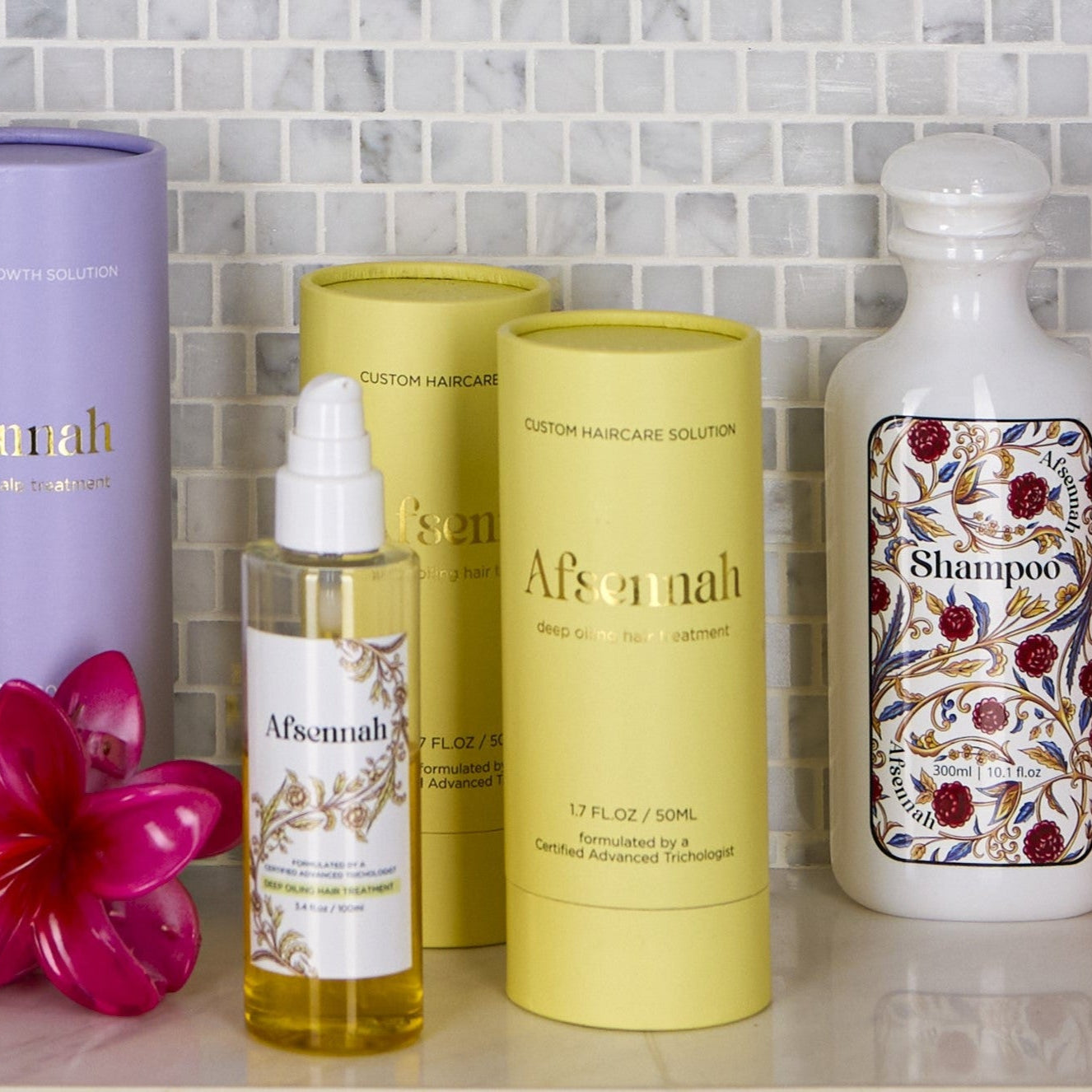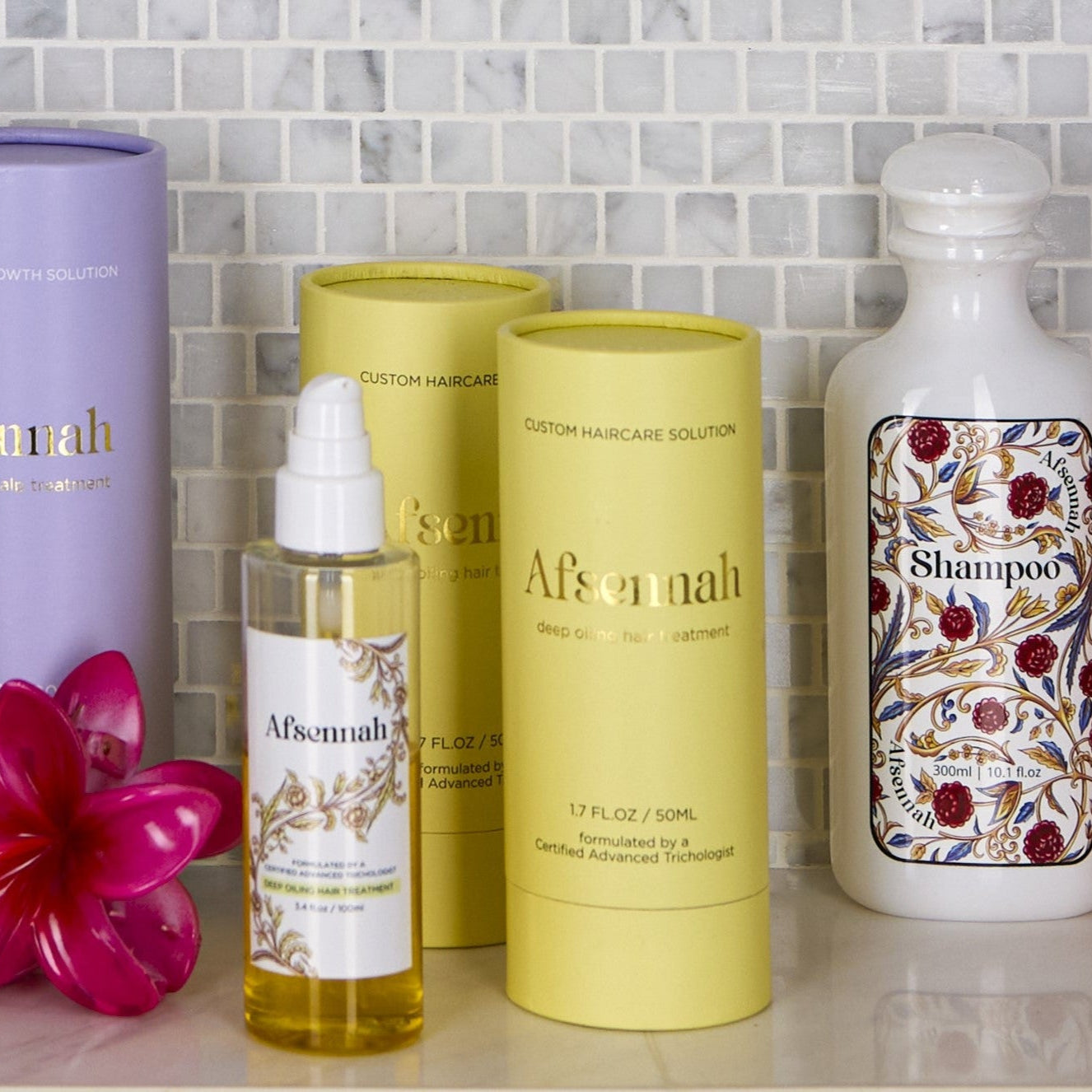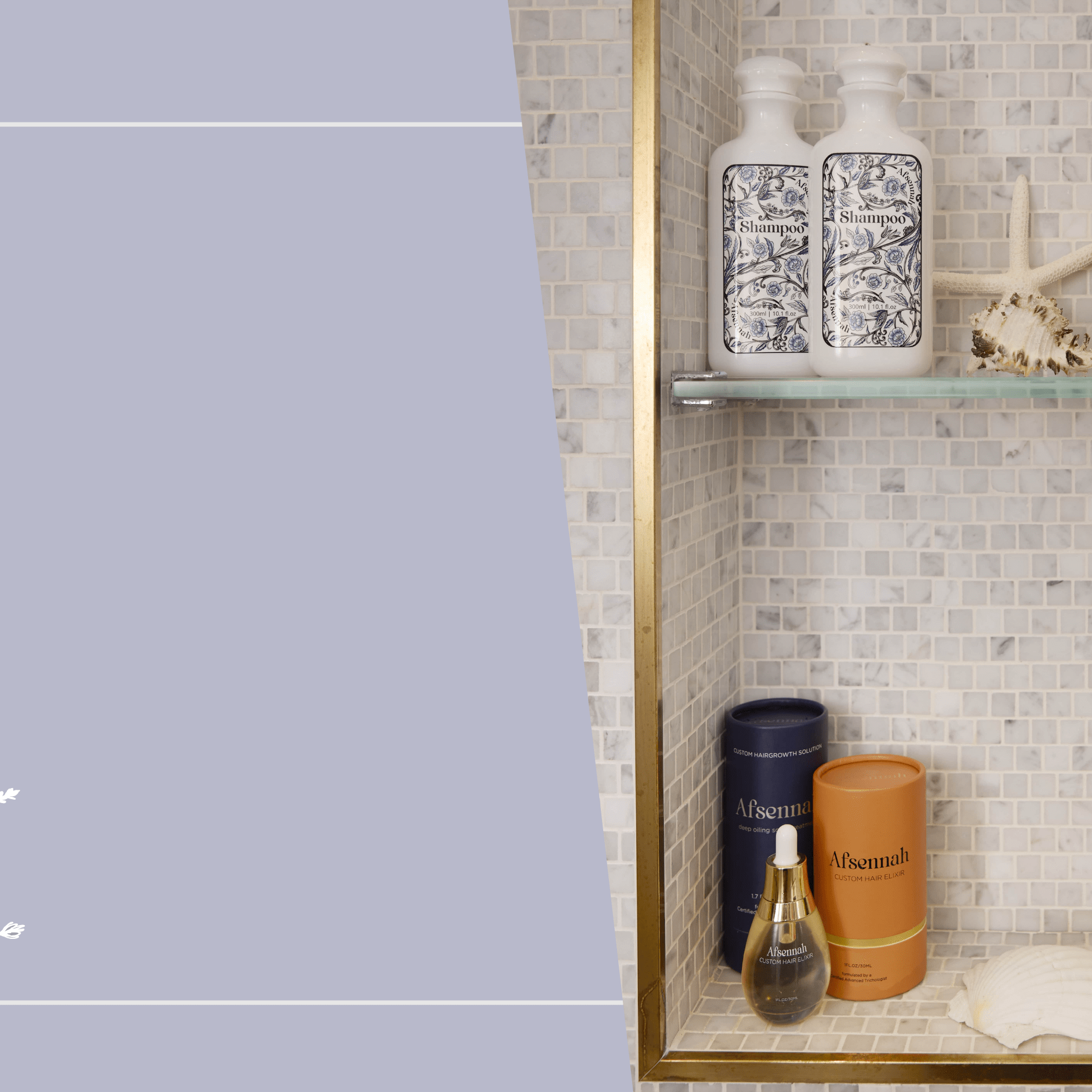Beautiful hair begins with your own formula. NOW 25% OFF the ENTIRE RANGE!
Answer a few quick questions to help Afsennah understand your hair and scalp. She’ll personally create a formula tailored just for you.
What's your gender?
Select your age
What are your hair transformation goals?
Multiple answers are possible
What’s your natural hair texture when air-dried?
If treated, recall your original texture.
Hair structure refers to the natural shape or pattern of your hair strands. Here are the four main types:
Straight hair is smooth and lies flat from the roots to the ends. It tends to be shiny because the natural oils can easily travel down the hair shaft.
Wavy hair has a slight curl or wave pattern that forms an "S" shape. It can vary from loose, gentle waves to more defined waves.
Curly hair has distinct curls that form spirals or ringlets. The curls can range from loose and bouncy to tight and springy.
Coily hair has very tight curls or kinks that can form zig-zag patterns. It often looks dense and can be prone to dryness due to the tight curls preventing natural oils from evenly distributing.
How long is your hair?
*For curls and coils, think of your length when fully stretched.
How is your current hair health?
Multiple answers
How would you describe your hair density?
Low Density
Your hair feels full and thick, when parted, your scalp is barely visible.
Medium Density
Your scalp shows slightly when you part your hair.
High Density
Your hair is more spaced out, your scalp is clearly visible along the part.
How thick is a single strand of your hair?
Rub a strand gently between your fingers to feel its thickness.
How is your scalp condition?
Your scalp condition depends on multiple factors. Below are the most important characteristics for each scalp condition.
Choose the one that you think best matches your scalp.
Normal (Balanced) Scalp
Produces a healthy amount of oil, keeping your hair and scalp moisturized. There are no signs of flakiness, dryness, or excessive oiliness. Your hair is manageable with a natural shine, and your scalp feels comfortable and irritation-free.
Dry Scalp
Produces less oil, leading to tightness, flakiness, and itchiness. Your hair appears dull and feels dry or brittle, and you might
notice small, white flakes similar to dandruff.
Sensitive Scalp
Easily irritated by hair products, environmental factors, or weather changes. You experience redness, itching, and discomfort, and often react to fragranced or harsh ingredients.
Oily Scalp
Produces excess sebum, making your scalp and hair greasy. Your hair looks limp and needs frequent washing, and you may be prone to clogged pores and scalp acne.
Irritated Scalp
Experiences discomfort, redness, and inflammation. This can be caused by harsh hair products, environmental factors, or underlying
conditions, and is often associated with itching and soreness.
Dandruff/Flaky Scalp
Characterized by large, white or yellow flakes on your scalp and hair, often accompanied by itching and irritation. This
condition is caused by fungal overgrowth, dryness, or sensitivity to hair products.
Scalp Eczema
Shows up as red, inflamed, and itchy patches on the scalp. It can cause flaking and may be triggered by allergens or irritants, leading to discomfort and soreness.Psoriasis: Presents as red, scaly patches on the scalp that can be itchy and painful. These patches may bleed when scratched and can extend beyond the hairline.
Folliculitis
Manifests as small, itchy bumps or pustules on the scalp, often caused by bacterial or fungal infections. It can lead to discomfort
and, in severe cases, hair loss.
Seborrheic Dermatitis
Characterized by greasy, yellowish scales and redness on the scalp. It is often associated with dandruff and can cause itching and inflammation.
I have been diagnosed with…
How long does your hair take to air-dry after washing?
Without using a hairdryer or heat tools
How does your hair react to water?
How does your hair feel when dry?
How does your hair react to humidity?
Have you ever dyed or bleached your hair?
Do you use heat tools?
Does your hair break or snap easily when combing or styling?
How does your hair handle detangling?
How does a single strand of wet hair behave when stretched?
Wet a strand before gently stretching it.
Are you currently pregnant or trying?
Do you have any allergies?
Type any allergies or ingredients to avoid. If none, type “no” to continue.
This is essential for formulating your hair products, so please be as specific as possible and list any relevant allergies (if you have none, simply type "no"). If it’s a food allergy that is safe for topical use, there’s no need to mention it.
P.S.: If there are any ingredients you prefer to avoid in your custom oil, feel free to let us know, we’ll ensure they are excluded! 😊
Your answers are analyzed. Click ''See My Results'' to continue
See what others with your concern are saying about our custom formulas!
“I’ve tried everything, but this is the only formula that truly delivers results for my hair.”
— Sarah M.

“My hair has never felt healthier, fuller, and stronger it’s truly transformed. Thank you afsennah!”
— Jessica L.

Your Personalized Hair Solution Is Ready!
Click ''show me my recommendations'' below or up to see the top 3 products handpicked for your unique hair needs pre-added to your basket.
Each one targets your exact scalp and hair needs for faster, visible results
Below is your personal hair diagnosis.
You have [[thickness]] × [[texture]] hair. Based on your answers, we’ve selected the products that will best help you achieve your [[goals]].
Once you choose your products, Afsennah will personally review your consultation to ensure the perfect formulation is created for your unique hair and scalp.
If we need any additional information to finalize your custom formula, Afsennah will reach out to you within 72 hours via email.
Your Answers
WINTER SALE 25% OFF SITEWIDE!
Your hair story is about to change. These products were chosen to help you grow, heal, and fall in love with your hair again. They’re already waiting in your basket. All that’s left is to begin.
Your Top 3 Products +25% OFF
Transform your routine into a ritual
Hair Accessories You didn't know Your Hair Needed
Order Summary
(0)WINTERSALE 25% OFF SITEWIDE! FOR A LIMITED TIME only + Free shipping on all orders above [[amount:100]]!
Every drop brings you closer to the hair you’ve been wishing for.
WINTERSALE 25% OFF SITEWIDE! FOR A LIMITED TIME only + Free shipping on all orders above [[amount:100]]!
Every drop brings you closer to the hair you’ve been wishing for.
Free shipping on all orders above [[amount:100]]!






